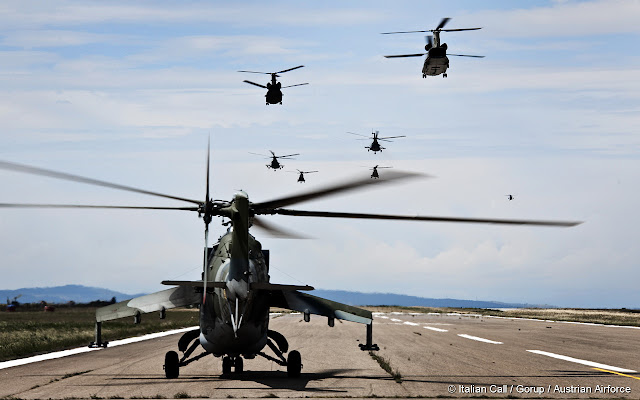(Credits: Austrian Air Force)
Exercise ITALIAN CALL 11, based in Viterbo, Italy, came to an end today as the crews and support personnel departed for their home bases. They part as friends and close colleagues, having met as strangers less than three weeks ago. They have lived together, planning and executing training missions as part of an exercise “European Helicopter Battalion”. They have learnt each other’s strengths, explored each other’s differences and have worked together to ensure that the collective experience is used to create best practice. This is the underlying principle behind the European Defence Agency’s Helicopter Training Programme, with IT CALL 11 providing the latest exercise in a series designed to create better understanding and trust between European crews and building true interoperability in a practical and tangible way.
The exercise was considered a huge success, with all participating nations grateful for Italy’s hospitality, professionalism and enthusiasm for delivering the EDA vision. This was underlined by the Commander of the Italian Army Aviation stating that he hoped for Viterbo to become a focus for such training in the Future.
There are many examples of the EDA theory in practice, but perhaps the most striking was a Belgium A-109 commander leading a mission of 32 helicopters from 6 nations – an event unlikely to have happened under a national training programme. Or perhaps the lively debate between attack helicopter pilots from the Apache (AH-64), Mangusta (A-129) and Hind (Mi-24), each using their own in-depth knowledge of their platforms to discussing the best tactics, techniques and procedures to use in high-threat environments.
During the exercise, over 500 hours were flown and more than 50 multinational “missions” launched. Crews were exposed to the complexities of multinational operations and many had the opportunity to lead a multination formation for the first time. Process were agreed and trialled and in the ultimate act of interoperability, pilots were exchanged across platform and nations – each flying a new aircraft type and gaining a unique first-hand experience.
Having started in France, been developed in Spain and now taken a step further by Italy, the EDA HTP moves on to Portugal (HOT BLADE 2012, July 2012) and Belgium (GREEN BLADE 2012, October 2012). Each will provide new opportunities and will play a part in ensuring that the programme evolves, remains relevant and provides the nations the essential training that they need.
Having started in France, been developed in Spain and now taken a step further by Italy, the EDA HTP moves on to Portugal (HOT BLADE 2012, July 2012) and Belgium (GREEN BLADE 2012, October 2012). Each will provide new opportunities and will play a part in ensuring that the programme evolves, remains relevant and provides the nations the essential training that they need.
